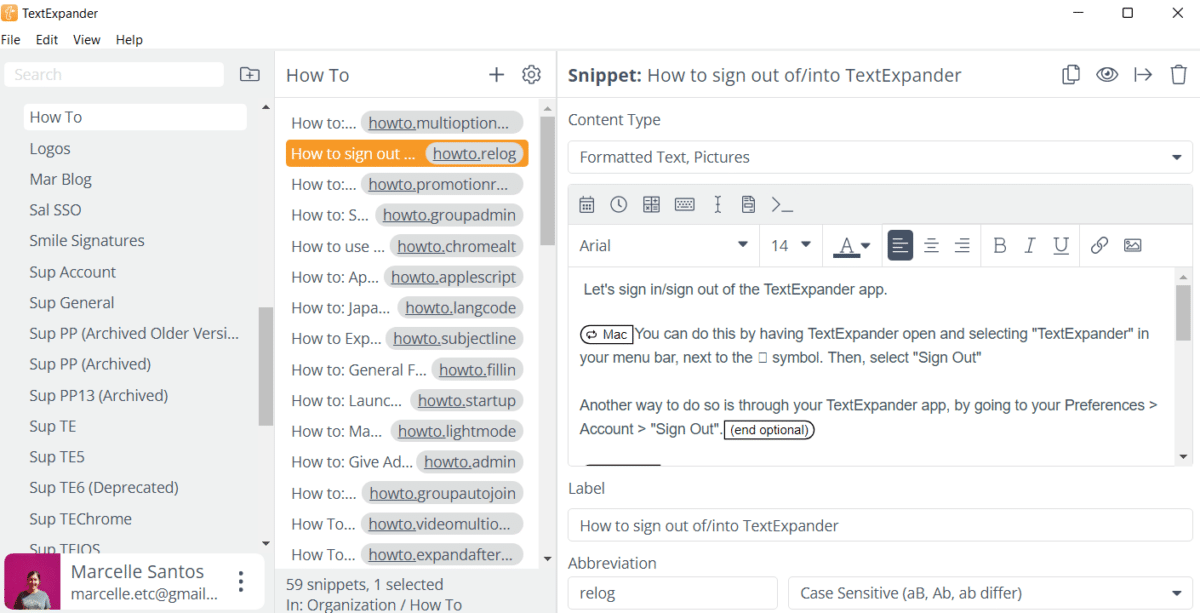You’ve hired a VA. Now, you get to offload all your annoying tasks on them and focus only on the important stuff. You’re free, at last!
Not so fast.
Before you can reap the benefits of having someone work for you while you sleep, you have some explaining do. And by that, we mean you need a plan for how to train your virtual assistant.
It can be tempting to take as little time as possible on this—to set your VA up with the accounts they need, give them a list of to-do’s, and call it a day.
Hey, we get it. You’re busy. If you weren’t, you wouldn’t need a virtual assistant.
Still, onboarding and training your virtual assistant is important. In this post, we’ll explain why, give you step-by-step instructions on how to train your virtual assistant, and share a few tips to help you succeed.
Why training and onboarding matter

Virtual assistants can do lots of things. Book flights and hotels. Build contact lists. Manage social media. Manage inboxes. Manage CRMs. Transcribe recordings. Make purchases. Perform general research. Provide customer support. Make cold calls. Source candidates. The list goes on.
What they can’t do is read minds.
“They can’t take one look at the business systems you’ve spent years shoehorning together and instantly intuit what needs to happen,” writes Eric Siu, CEO of digital marketing agency Single Grain.
Also, they might be unfamiliar with the tools you use for work, unsure about what you expect from them, unclear about what voice and tone to use in communications—to name a few things that might need clearing up.
Taking the time to onboard and train your virtual assistant after you hire them will save you (and them!) a good amount of time and frustration. It will also set your relationship off to a good start.
Why does that matter? Like any other worker, VAs perform better when they feel empowered, i.e. capable of doing their jobs, confident the work they do matters, and able to make decisions.
They are also more likely to quit when they feel disempowered and disengaged.
Taking the time to onboard and train your virtual assistant will help them better understand and be effective in their role, and feel more connected to your business.
How to onboard your virtual assistant

Onboarding is the stage prior to training where you give the new hire a general sense of who you are, what your company does, and set expectations for how you will work together.
It’s also the stage where you set them up with tools and accounts and give them access to projects and documents.
Here are the basic steps for onboarding your virtual assistant:
1. Give them tools
Before you begin working together, ask your VA about their technology setup.
Depending on the tasks you’ll need them to complete, you may have to provide additional equipment (for example, an iPhone for testing an iOS app) or ask them to download new software, such as Zoom or TextExpander.
Make pricing and purchasing these items (which you will pay for), or downloading new tools, one of their very first tasks.
2. Give them access
Create an email address for your VA to use exclusively for working with you. (Or, if it makes sense, have them create the email as one of their onboarding tasks.)
Creating a work email address, as opposed to letting them use their personal email, will make it easy for you to revoke their access to team collaboration tools in the future, if necessary.
Then, give them (via their newly-created email address) access to tools and internal documentation.
Tip: Save your VA’s email address as a TextExpander snippet so you don’t have to type it multiple times as you add them to platforms and shared documents.
3. Introduce them
Resist the urge to start copying your VA in emails, or tagging them in task boards, without introducing them.
A proper introduction will not only make them feel more welcome, but it will also make their interactions with your work contacts less scary and awkward.
Again, you can easily assign this as an onboarding task. Ask them to introduce themselves in their own words. This will give team members a better sense of who they are and what’s important to them.

That said, you’ll need a succinct way to let clients and collaborators know you have an assistant and that they’ll be facilitating certain tasks for you.
For example, in correspondence with a vendor, you might CC your assistant and say, “[VA name] can help us find a time to meet.”
If you’re savvy, you’ll save handy phrases like this on TextExpander so you get them on the screen with just a couple of keystrokes.
4. Educate them about your business
Your VA will be more engaged and better able to do their job if they understand who your customers are and what products and services you offer.
You can educate them about your business and company culture by sharing relevant links to documents, website pages, and videos. You can also give them access to your online products (if applicable).
By giving them a window into your organization, you’ll be helping instill in them a sense of belonging, which has been shown to increase job performance.
5. Set clear expectations
Virtual assistants should know what you expect from them. Do they need to show up to work at a certain time every day? Do they need to check in with you when they start or end their workday?
How should they communicate? In what situations is it okay for them to call?
Similarly, they need to know what to expect from you. Are you always available or will you check in just once a week? How do you like to communicate? How will you manage their performance? When and how will you pay them?
You can share this information on a call or put it in a Google Doc. (If you only do one, make it the Google Doc—that way, your VA can reference it later.)
How to train your virtual assistant
Onboarding complete, it’s time to start training. How you train your virtual assistant will depend on the type of work you will need them to do and the tools you will need them to use.
Here are some general recommendations:
1. Identify what they need to learn
Identify the skills and knowledge your virtual assistant needs to master to be effective at their jobs. Careful not to assume they’ll know what you know, including how to use your team’s chosen task board.
2. Make a plan
Create a training program for your VA, complete with goals and timelines. For example, say you want your VA to be able to review, upload, and schedule email marketing emails by the end of the first month.
You might set a goal for them to become fully knowledgeable of your company’s style guide by the end of the first week. By the end of the second week, they should be able to upload the emails to the email marketing software and send tests, and so on.
By breaking your VA training into small milestones, you’ll avoid overwhelming and help them feel accomplished from the get-go.
3. Collaborate on difficult tasks
In the beginning, you may not want your virtual assistant to tackle complex or sensitive tasks without supervision.
For example, if they are helping out with customer support, you might ask them to focus on the easy, straightforward tickets (e.g. refund requests).
You can work together on complicated issues. For example, they can write responses and save them as Drafts for you to review, comment, and edit before sending.
4. Save and iterate approved verbiage on TextExpander
You can’t expect your VA to memorize everything about your company and the products/services you provide when they’re just starting.
But you can give them easy access to all your company wisdom—including product links, codes, and descriptions, and the perfect responses to customers’ frequently asked questions—via TextExpander.
Say a customer writes in asking for information about a certain product. Your new VA might not know the answer, but they can find the answer by doing a keyword search for it on TextExpander, provided you previously saved that content to the app.
The image below, for example, shows a saved response to a common question (How do you sign out of TextExpander?). Anyone with access to this snippet can find it by doing a keyword search (e.g., “sign out”).

Don’t have a robust library of snippets ready? No problem. Ask your VA to save all approved verbiage to TextExpander. As you train them, you will also build out your TextExpander library, which will make future team onboarding even easier.
Tips on how to train your virtual assistant
1. Use checklists
When it comes to onboarding and training your virtual assistant, there is a lot to cover. The best way to ensure nothing falls through the cracks is to create checklists.
Apps like Trello are ideal for this. You can create columns for the different stages of training, create checklists for different goals, and assign deadlines for all tasks.
2. Increase access over time
Rather than give your virtual assistant full access and permissions on day one, consider sharing only the essentials for getting their work done at first.
You can expand their access to additional systems or give them administrative privileges over time, as you build trust.
3. Evaluate performance
Create a process for delivering constructive feedback, addressing issues, and setting goals.
If you already do annual employee performance reviews, you can replicate the process with your VA.
Alternatively, you can replace the annual performance review with regular check-ins, instant feedback, and short-term goals.
(For helpful tips on both approaches, check out our Manager’s Guide to Employee Performance Reviews.)
Onboarding and training lead to success
Like any new hire, your virtual assistant needs proper onboarding and training.
While onboarding entails setting up your virtual assistant for success by providing essential tools and information, training is all about teaching them how to do the work.
These processes, combined, help virtual assistants feel competent, confident, and like they belong.
Ready to simplify your work as a manager and leverage TextExpander as a training resource?



Glad I found this article about virtual assistant. Keep writing
helpful articles like this one. I’ll definitely visit this blog
to read more.
Proper onboarding and training provide the foundation for a productive and long-lasting working relationship. I can’t stress enough the critical role that onboarding and training play in the success of a virtual assistant-employer relationship. I’ve never tried TextExpander, but it sounds like a good way to streamline the training process and ensure that virtual assistants has all the necessary tools and information to perform their duties effectively.